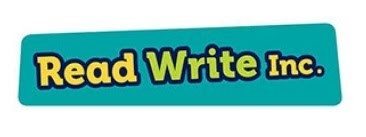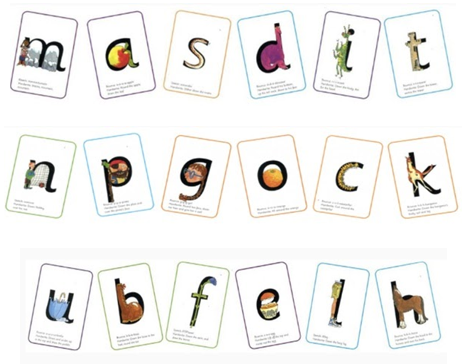Reading at Whitefield School
Reading skills are an essential requirement for an active and independent life for all children.
We are dedicated to ensuring that all pupils to leave Whitefield School at the end of their school career with the highest degree of literacy skills possible for their individual level of ability.
Our reading curriculum has been designed to recognise and celebrate the small steps on the pathway to reading fluency and is inclusive of all abilities within our school. It places emphasis on the importance of attention and listening and pre-phonics skills which are crucial to master before pupils are ready for phonics. The importance of comprehension is emphasised at every stage of the reading curriculum through the explicit teaching of vocabulary to ensure that pupils understand what they are reading.
Reading for pleasure at Whitefield School
We recognise the incredible value in reading for pleasure. Enjoying stories and books together does not only provide meaningful connection and shared joy but directly links to our pupil’s success throughout their time at school and beyond the classroom, supporting their quality of life now and into adulthood.
We firmly believe that reading for pleasure supports our pupils to develop their wellbeing, empathy, connection to others, their ability to gain insight into the world and skills in independence.
At Whitefield school we promote reading for pleasure in a number of ways:
- We value the books pupils choose to read - we are continually building a high-quality stock of ‘mirror and window’ texts, where a pupil can see themselves and glimpse into the lives of others in stories and non-fiction. If a pupil has a special interest, we make sure to stock books to fuel that passion.
- Setting aside time to read - we promote time for reading in the school day, whether this is story time for the whole class, individual reading time, audio stories, personalised books, sensory stories or story massage, we love it if our pupils and our staff get a chance to read or be read to in the day.
- Local library visits - we encourage our classes to make use of our local libraries to give them broader access to types of texts and to help them build skills in independence whilst finding books they enjoy.
- Celebrations and special events - World Book Day is one of the highlights of our school year! Competitions and reading events for pupils helps to broaden their exposure to different books, and promote positive communication about reading.
Read Write Inc.

Phonics at Whitefield School
We use the Read Write Inc (RWI) programme which follows a method of teaching reading and writing, centred on learning the sounds of the letters and then blending them together to read words. The children will also learn to break down words into individual sounds in order to support them along their journey of developing their writing skills.
Pupils with Autism Spectrum Conditions (ASC)
Learning is tailored to meet the individual needs of each child and in line with their Education Health Care Plans but everyone requires the same knowledge of the alphabetic code to become independent readers and spellers. This is true of all learners, including those with SEND. A range of approaches for teaching phonics will be used alongside the prescribed approach when working with pupils with diagnosis of ASC because each child learns in a unique way. This may involve the use of visual resources, concrete objects or the use of simple, concise language and minimal instructions

Pupils will only start the RWI phonics programme once they have achieved and consolidated the earlier small steps, meaning they have the necessary pre-requisite skills and knowledge to access the programme in a meaningful way. The programme may be delivered as a whole class, small groups or through 1:1 tutoring depending on the needs of the individual.
All pupils accessing RWI will begin by learning the Set 1 sounds in a specific order and progress through each set at their own speed. Children will also begin learning to blend sounds together to make words after learning the first 5 sounds, firstly through practising oral blending. Once children can blend independently, they will progress on to reading green words.
The sounds are broken into three sets and children will only move onto the next set when they are confident blending and recognising the previous set.

Once children can read green words, they will move on to begin reading stories in their sessions. Each storybook is matched to the sounds the children have grown familiar to, which supports the transition onto the next stage and aids them to build their confidence with reading. The children are exposed to and start learn the red words through these storybooks, which are words that are not phonetically - plausible. The process is repetitive and supports learning at Whitefield School, as it builds upon a consistent a systematic approach as each storybook is taught in the same way, with children practising reading the green words in the story and also the red words, before they begin to read the book. Children will then read the book several times to help build their fluency
and comprehension.
How will Whitefield parents be supported and encouraged to support at home
Before children can write independently, they need to have enough ‘cultural capital’ for their writing to have meaning. A wide knowledge and understanding of vocabulary provide the tools to put thoughts and ideas on paper. For some children, their vocabulary is showcased through speaking whereas for non-verbal children, they will show their knowledge and understanding through augmented and alternative communication which replaces the spoken word. Non-verbal does not
mean non-reader.
Sharing stories and reading together regularly at home is a powerful way to encourage a love of literacy but skills for reading can also be enhanced in a number of other ways. Please see below for some ideas:
- interacting with your child through music, songs, rhymes and speaking about your day
- Encourage children to notice signs and symbols in everyday life, such as familiar logos and icons for apps.
- Encourage children to identify the sounds they hear in the environment and to explore making rhythms with musical instruments and upcycled resources.
- Focus on meaningful print (such as a child’s name, words on a cereal packet or a book title, icons on a weather app) in order to discuss similarities and differences between symbols
- Encourage children to recall words they see frequently, such as their own and friends’ names
- Model oral blending of sounds to make words in everyday contexts, e.g. Can you get your h-a-t hat
- Introduce children to new words, and explore their meaning together e.g. by acting out words and playing games with words
- Introduce children to books and other materials that provide information or instructions. Carry out activities using instructions, such as reading a recipe to make a cake or following safety procedures.
- Encourage children to predict outcomes, to think of alternative endings and to compare story plots and the feelings of characters with their own experiences
